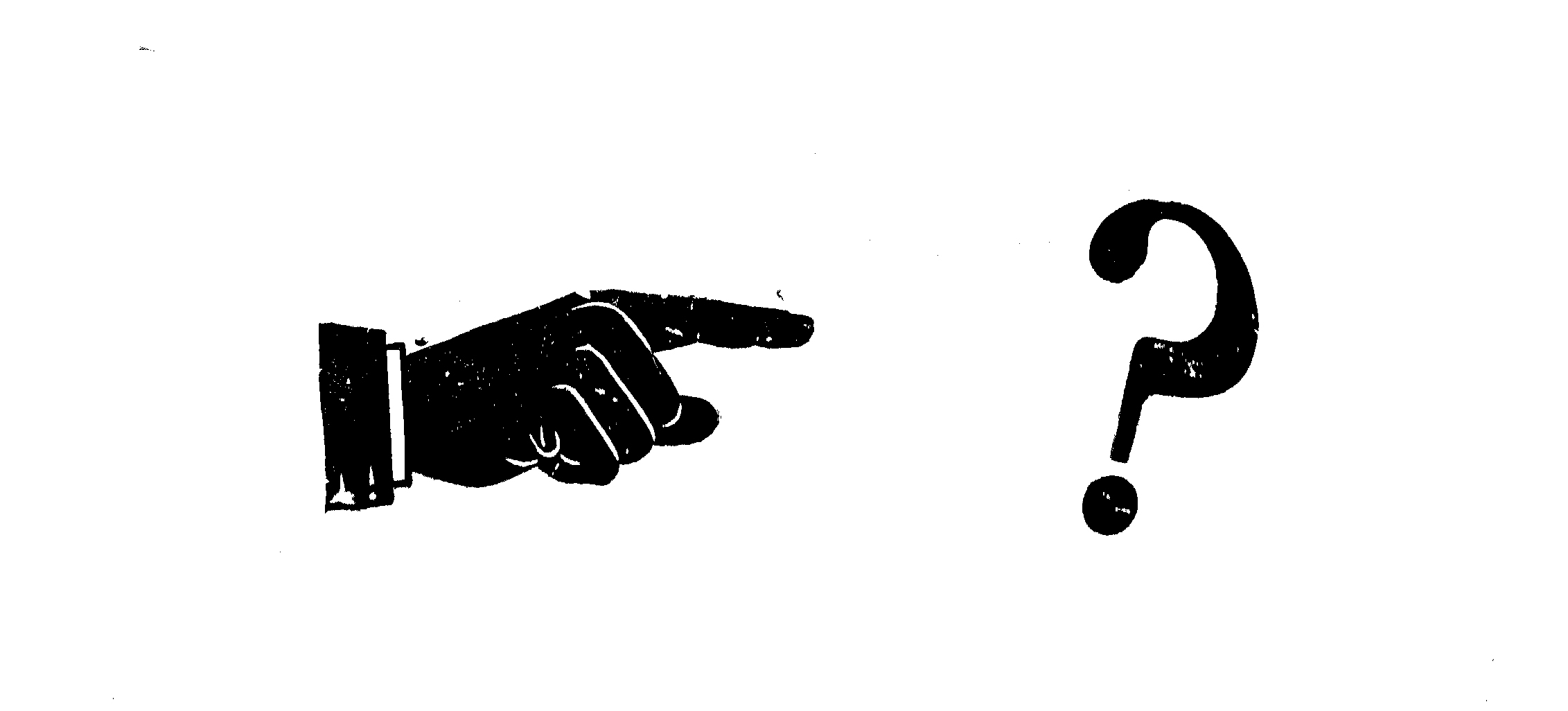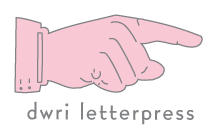General Questions
I'd love to work with you! How do we get started?
You can either reach out to us via the contact form, email us directly at info@dwriletterpress.net, or give us a call (401) 831-3120. Please feel free to tell us as much as you can about the job and attach a PDF if you have one. Even rough artwork can be useful to help us understand what you are going for and to generate an estimate for you.
Can I visit the studio?
We love having visitors, but due to the coronavirus and timing constraints, we do ask that you email ahead to schedule a visit to discuss your project. We look forward to opening our doors to tours and events again in the near future, in the meantime please see our news and events page for any announcements regarding upcoming workshops.
How soon should I contact you for wedding invitations?
Please see our invitations FAQ for specific questions relating to weddings. You can start the process by emailing any questions to info@dwriletterpress.net, or fill out a wedding quote request.
How do I order pencils?
Custom pencils can be ordered directly here. If you have a more complex pencil order, contact us directly.
So, in a nutshell, can you tell me what is so special about letterpress printing?
Letterpress printing is a relief printing process, meaning that you are inking a raised surface (type, plate, linoleum cut, etc) and anything that is not raised or has been cut away will not receive ink. This inked surface is placed under enormous pressure to print the image onto a sheet of paper, leaving a slight (or deep impression!) on the sheet. The depth of this impression made is variable depending on the aesthetics of the job. This distinguishes it from offset, silkscreen, or digital printing, which lies completely flat.
Can you print without ink?
Yes, that is called a blind deboss, and the type or image will just show the indentation into the paper. You can make it more visible by adding a clear varnish, or more defined with a true male/female embossing plate set for thinner papers.
Can you print white ink on black paper?
Yes, but it will NOT appear white - letterpress ink is not completely opaque when printed, and so it will appear more like a dark grey, and sometime be hard to read. Metallic silver ink is a good alternative as it is more opaque, or consider foil stamping in white foil (which has its considerations and will add to the cost).
Do you offer foil stamping?
We do! Hot foil stamping is distinct from printing with ink, but is still a relief process, and allows the use of shiny gold, holographic silver, and many other opaque and metallic colors. Hot foil stamping involves pressing a thin opaque foil into the paper using heat and pressure from a metal plate (or cast type), and is generally (but not always!) more expensive then straight letterpress printing.
How old are these machines?
Most of our presses were built in a period from the 1890's to 1950's, the heyday of letterpress printing technology, with our paper cutter (and computers!) coming a bit later. We use machines built in the 1920's and 30's on a daily basis.
Can I get a proof?
We will send a digital proof before we go to press to confirm all of the details for your job. Because of the amount of work necessary to set up a job on press, press proofs are only available in particular circumstances, and there may be an aditional cost.
Do you have a minimum order quantity?
No, but small quantities can have a high cost per piece -- see below for more information on pricing.
How long will my job take? Can it be rushed?
Our turnaround is usually 10 to 14 working days from the time all final files and confirmation of details have been received, however depending on our schedule, the timeline could be significantly faster. We do offer rush services (as timing allows) for an additional fee.
I have a photographic image I would like to have printed. Can you do that?
Maybe! Letterpress printing is best for printing very graphic, or high contrast, images. This is because it is a completely binary relief process, meaning the raised surface of the type or image is either printing (raised) or not printing (not making contact with the ink or paper). There are ways, however, of simulating continuous tone images such as photographs or other images that vary in tone from light to dark. This can be done by cross hatching thin and thick lines to create the appearance of light and dark areas (see Albrecht Durer), by using a posterization effect to create multiple "line-art" exposures of a photograph and then printing them on top of one another (see Andy Warhol), or by using something called a halftone screen, which breaks up the light and dark areas of an image into tiny dots of varying sizes, larger in the dark areas and smaller in the light areas, creating the illusion of lighter and darker colors (see Dan's homage to old postcards here). So the short answer is yes, it is not an ideal process to do so and will alter the nature of the image, but it is possible. Like everyting, it is all in the details! In addition, we can print digitally for photographic imagery and incorporate that digital process into the final letterpress print.
What does 100# text, 220# cover, or 130gsm, etc mean?
These are all specifications for paper weight. A 110# cover paper (or 300gsm) is equivalent to a medium weight business card. 220# cover (or 600gsm) is twice as thick as a 110# cover. Text weights are more confusing, as a 100# text weight paper (135gsm) is actually thinner then a 100# cover (270gsm). Don't even ask about writing weights, as a 28# writing is equivalent to a 70#text... We are happy to explain this in more detail, and will guide you through the paper selection process in a way that make sense to you.
So, what would the image at the top of this page look like when printed?
Great question! Something like this...

Pricing
How much does letterpress printing cost?
There are many variables that go into how much a letterpress project costs, and any quote will depend on the details. That being said, each piece and each color of a project requires a separate printing plate, set-up and press run, so the more colors the higher the costs. Because much of the cost of letterpress is in the setup, very small print runs will have a relatively high cost per piece, while single color jobs in larger runs can be comparatively inexpensvie. Please contact us with any pricing inquiries.
Ok, fine. But really - how much will it cost??
Again, everything is truly in the details! However, that being said, a typical wedding suite (invitations, reply cards, and envelopes) could start at $600 - $800 but can quickly go up depending on the complexity, the details, and the design costs. Single color letterpress business cards could range from $175- and up for a box of 100/250 cards. Please reach out to us via the contact page with as many details as you have and we would be happy to put even a rough quote together - for invitaions, please use this form for a more accurate quote.
File Preparation
I have a design ready to print, what file type should I send?
Generally speaking, we would ask for the native file format you created the job in (Indesign, Illustrator, etc), with type converted to outlines, colors set as distinct spot color swatches, and all images attached, along with a pdf for reference. If it is a single color job, and this is already confusing, a high quality black and white pdf is usually fine. Please contact us with any file questions you have - it is much better to be in touch before getting too far along with your digital work.
How do I specify what ink color to use?
When submitting a job for printing, we will ask you to choose a specific Pantone Matching System color. Because computer screens present color in a completely different format than printed ink on paper (additive vs. subtractive color), it is very important to see and reference a physical Pantone printed swatch when choosing your ink. We have swatchbooks in the shop, and are happy to send out a sample swatch if needed. Note that most letterpress inks are somwehat transparent, so they will change depending on the color of the paper you are printing on: White ink will not print opaque white on a darker color paper.
Wait, what are Pantone colors?
The Pantone Matching System is a way for printers, designers, and their customers to communicate with each other. Color is complicated! As we all see and experience color differently, and computer screens and inkjet printers all show colors inconsistently from one another, a physical Pantone color swatch is the one unviversal constant all parties can reference. A Pantone 032 Red printed swatch is the same in California as it is in Providence, Rhode Island regardless of what it looks like on one's own computer or desktop printer, or how ones own biochemical response sends those signals to their own brain. How do we mix our Pantone colors to match? See this video!
How do I design a project if using hot metal type?
If planning a project using our hot metal typecasting or wood type you would want to consult with us first over the details. Basically, you would be choosing type from our collection of original type matrices, which can be seen here for the Ludlow, and here for the Linotype. Please see our typecasting page for more information, or feel free to contact us if you have any questions.
More Questions?
What's up with all of the pointy finger things on this website?
The pointy finger, or printer's fist, is called a manicule. It has been a feature in written works since before the age of printing began in Europe in 1450, when Gutenberg combined his invention of the printing press with the concept of moveable type. It is a way of saying to the reader, Hey! Look here - this is IMPORTANT! It has been a popular typographic element in the history of printing ever since.
Do not hesitate to contact us with any other questions you may have.



